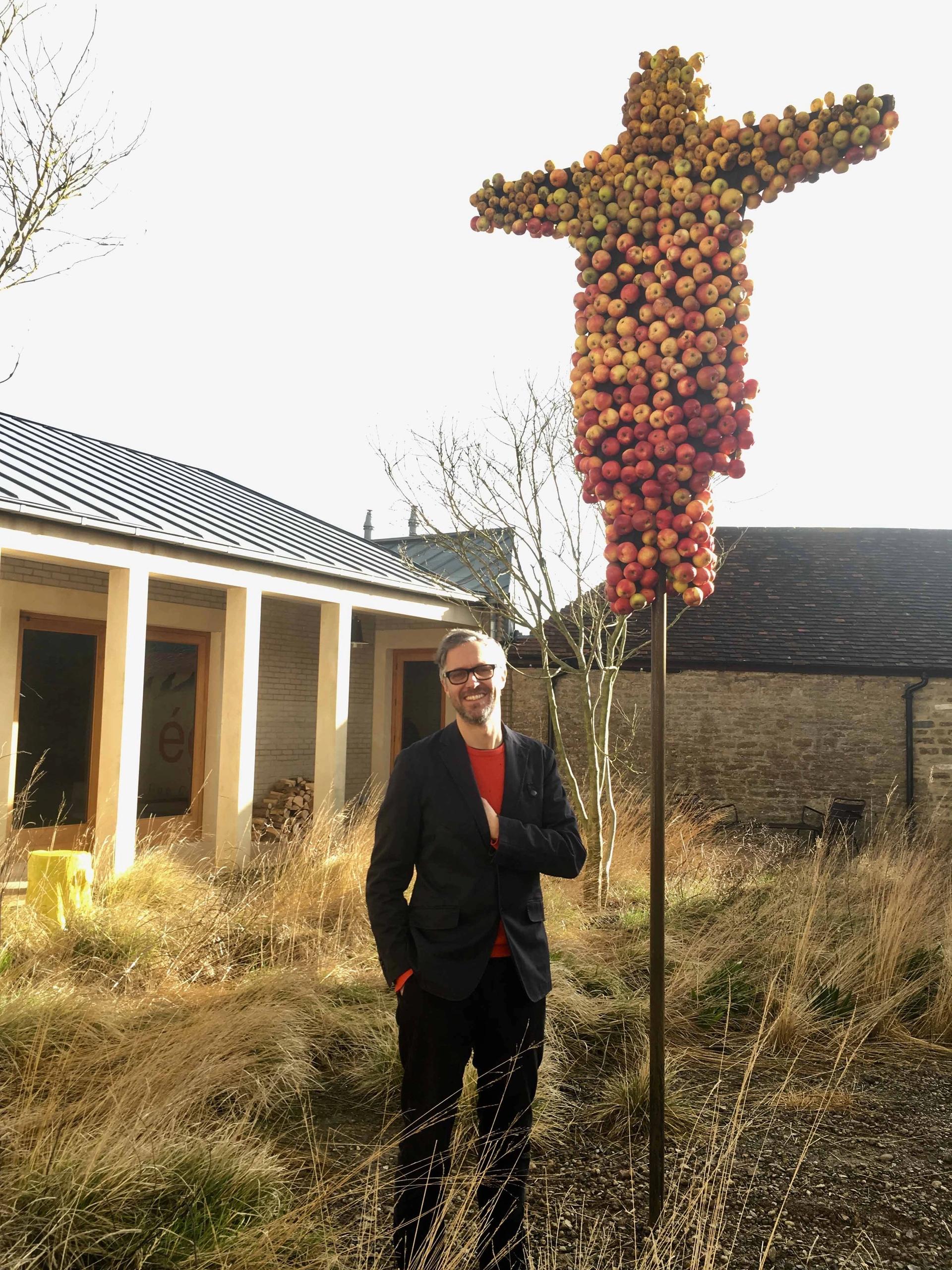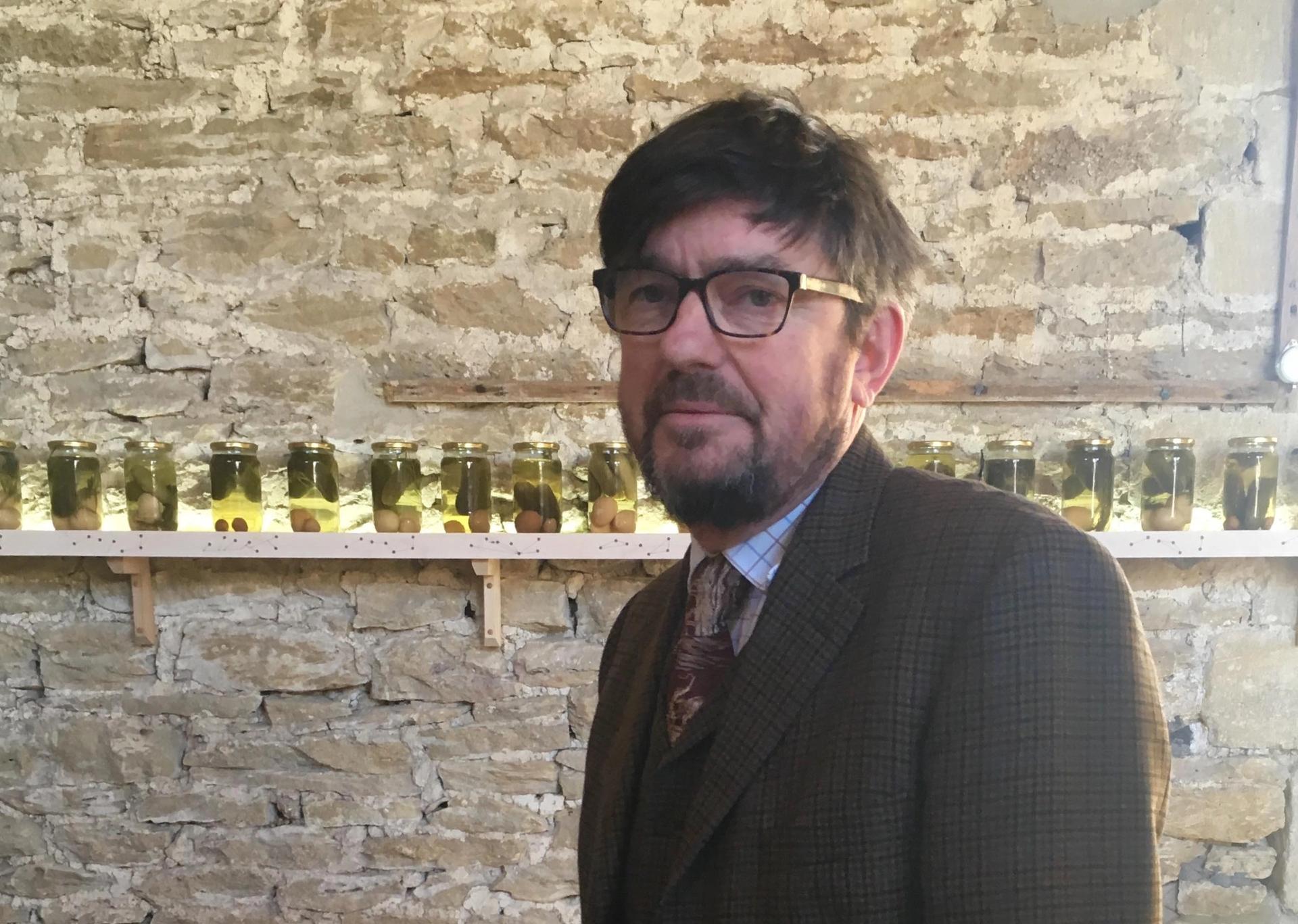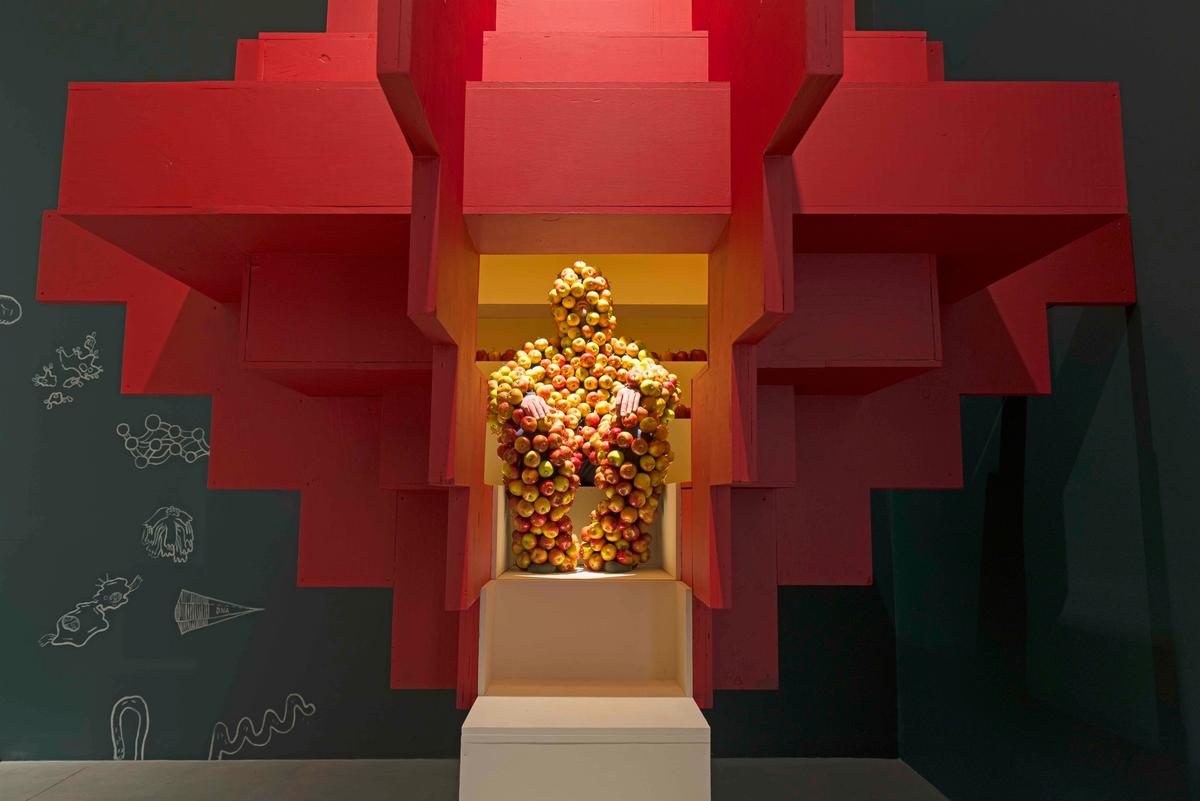Appropriately for a former farm turned international arts centre, Hauser & Wirth Somerset’s latest exhibition The Land We Live In, The Land We Left Behind (until 7 May)—which opened at the weekend (20 January)—delves into our complex and confused relationship with the rural. And what a journey it takes us on.
Eclectic is an understatement, with exhibits inside and out spanning live goats (complete with their own Garcia-Dory/Hayatsu Architects-designed pavilion); giant maggoty mushrooms by Carsten Höller; a lettuce-growing tank system from Chicago’s Sweet Water Foundation; philosopher, poet and gay activist Edward Carpenter’s leather sandals; and a Henry Moore tapestry.
Walls and cases full of historic artefacts record centuries of high rural hopes and mystical utopia-seekers, whether in the form of the early Adamites through to the artist and critic John Ruskin, the Boy Scouts, and posters for the rock band the Grateful Dead. There’s even an honesty shop stocked with the crafty knittings and stitchings from Somerset locals.

Marcus Coates and his "Apple Service Provider" suit Louisa Buck
Among the cornucopia of artworks there are yet more odd interconnections and strange but apposite encounters. Beatrix Potter’s drawing of fungus keeps company with the photojournalist Don McCullin’s broken tree and the German artist Kurt Schwitters comes up against a glowing Disneyfied work by the American painter Thomas Kinkade.
In the room devoted to “revival, resurrection and transformation” within the context of food and eating, a row of works by the Italian painter Giuseppe Archimboldo and a 17th-century Flemish still life are displayed beside a (real) compost heap, while a film of grim industrial food preparation forms the backdrop for a table groaning with gastronomically-influenced artworks by many of today’s leading artists, including Ryan Gander, Pablo Bronstein, Laure Prouvost and Aaron Angell.

The show's curator Adam Sutherland Louisa Buck
The curator of this extravaganza is Adam Sutherland, the director of the arts collective Grizedale Arts in Cumbria, who describes the show as being “not really about the natural but about human nature and our aspiration for better natures”. As evidenced here as well as in his numerous collaborative projects in the Lake District and beyond, Sutherland passionately believes in the usefulness of art. “It’s important that art is valued and used: art is a process, a verb and a communicating fabric between objects,” he says.

This little goat is part of Hauser & Wirth Somerset's latest exhibition Hauser & Wirth
The same view was powerfully expressed by artist-Shaman Marcus Coates, who for the opening weekend held court as the “Apple Service Provider”, offering one-on-one encounters in a small raised wooden hut based on the contemplative hermitages of 10th-century Anchorites. Instead of bringing faulty laptops, visitors were invited to bring pressing questions—personal or global—to which Coates, encased in an all-encompassing suit made of apples, would then apply his knowledge of apples as a means to find an answer. (The space also served as an “Apple Store” and visitors were invited to help themselves to its fruity contents). “We need to reinvest in nature and the land in practical ways and apply knowledge acquired from nature to everyday problems in a contemporary context,” he told me. Who knows, it might even work for laptops too.



